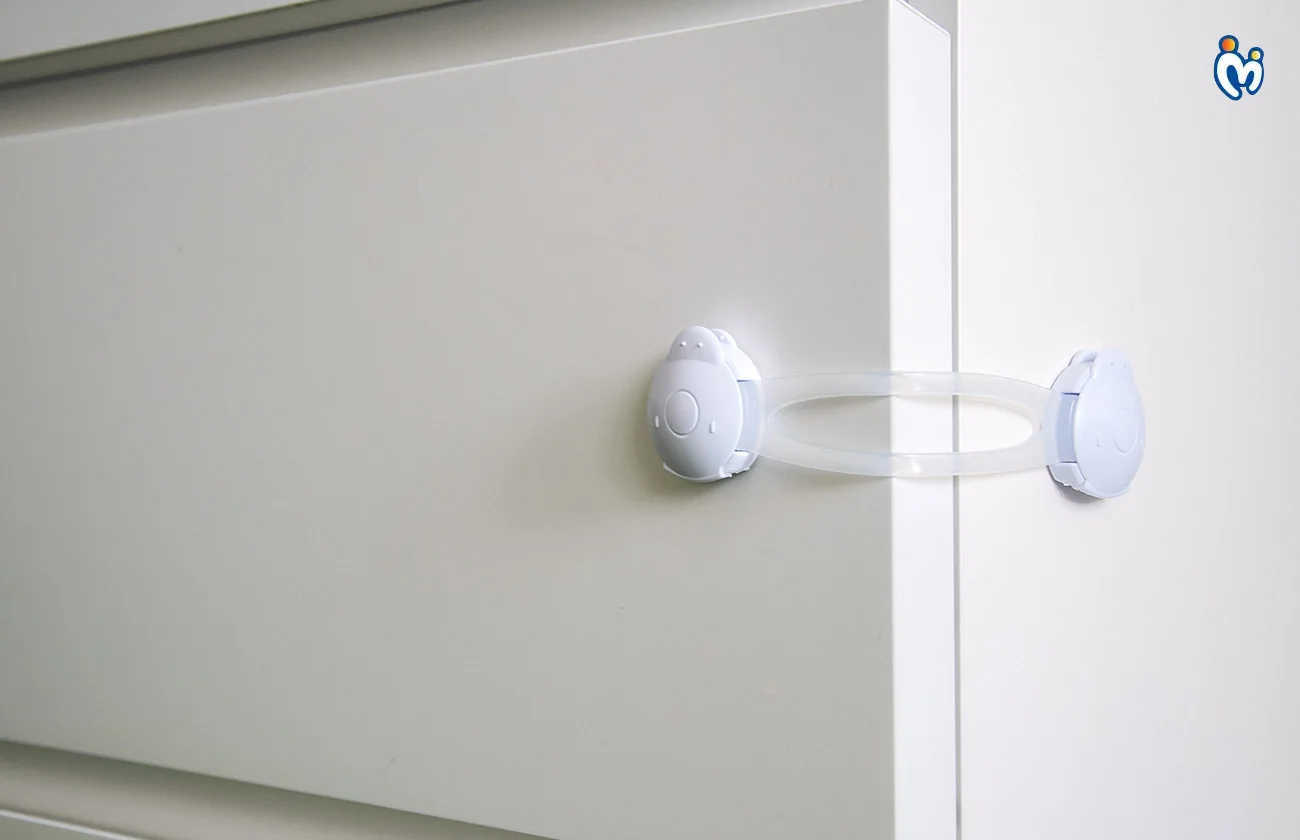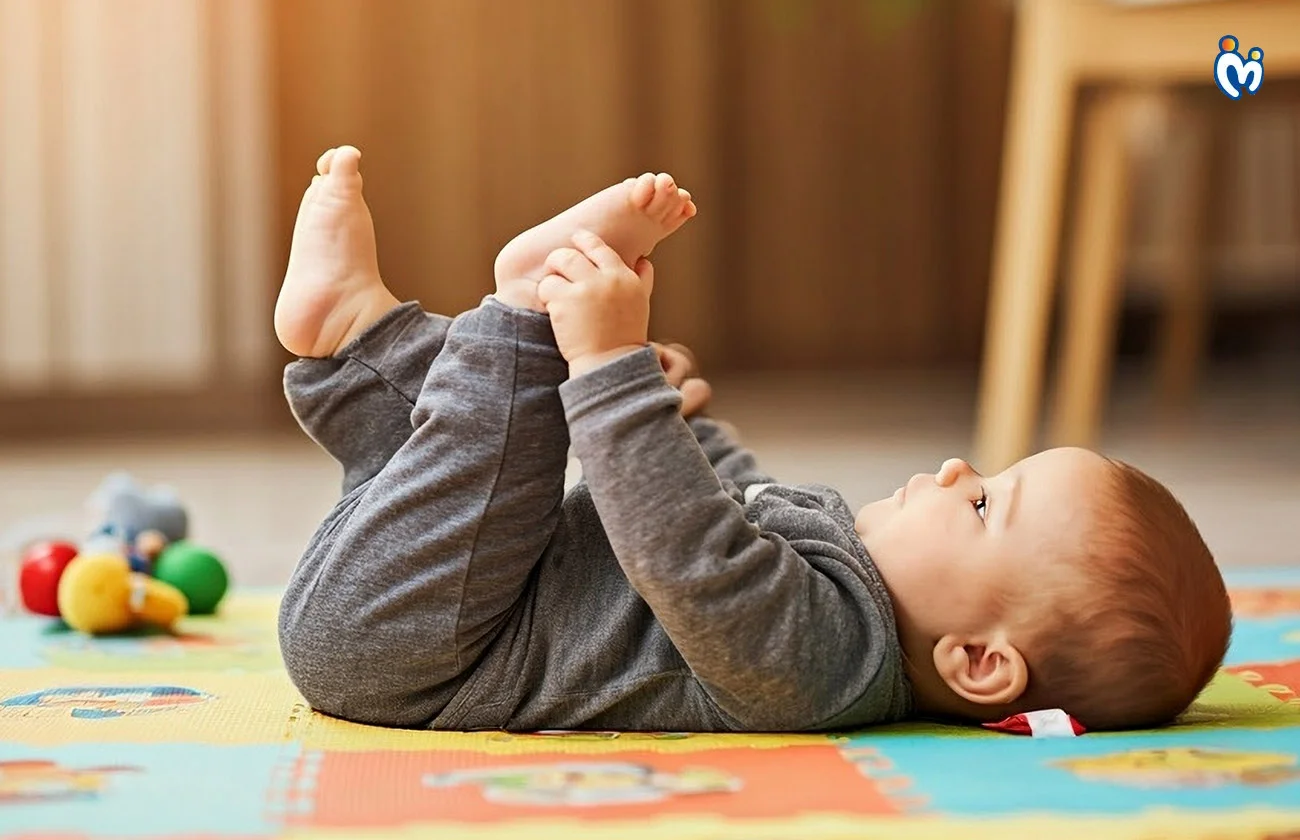(Baby’s first moves. Your cue to babyproof.)
Hey mamy, guess what? Your little one is about to become mobile. And while it’s exciting (and adorable), it’s also the moment your home goes from “aww” to “uh-oh.”
Crawling is a big milestone—it means your baby is growing stronger, more curious, and ready to explore the world one wobbly wiggle at a time. But it also means it’s time for you to level up: babyproofing, energy-chasing, and maybe saying goodbye to the idea of clean floors. Don’t worry though—we’re here to walk (well, crawl) you through it.
The Wobbly Stage: When Do Babies Start Crawling?
Most babies start crawling between 6 to 10 months, but some may skip crawling entirely and go straight to cruising or walking. Others do creative versions—backward scooting, belly army crawls, or even rolling around to get where they want.
So, mamy, if your baby isn’t doing the traditional crawl by month nine—don’t panic. Every baby moves at their own rhythm.
Why Crawling Matters (Beyond the Cuteness Factor)
Yes, the videos of your baby crawling will be absolutely adorable. But apart from being an adorable moment that you capture on your camera to probably post on social media, it is also:
- A brain-building activity (left-right coordination, problem-solving, spatial awareness)
- A workout for arm, shoulder, and core strength
- The first lesson in independence and confidence
Basically, crawling is like baby yoga, brain gym, and adventure camp rolled into one.
Signs They’re Ready to Move
Here’s how to tell if your baby is gearing up to crawl:
- They can sit up without support
- They start rocking back and forth on hands and knees
- They push up during tummy time
- They suddenly look at the dog and really want to follow it
If your baby shows these signs, get ready—chaos is incoming.

Let’s Get Crawling: How to Encourage the First Wiggle
Don’t worry—you don’t need a baby treadmill. Just a few simple moves can nudge your little one in the right (adorable) direction:
1. Tummy Time
This is the MVP of baby development. It strengthens neck, shoulder, and core muscles. Start with a few minutes a day from birth, and increase gradually.
2. Tempt Your Baby with Toys
Place a favorite toy just out of reach. Bonus: use toys that light up or make noise to grab attention and encourage movement.
3. Be Their Obstacle Course
Lie down a few feet away and call them over. Clap, smile, and cheer like they just won Olympic gold.
4. Don’t Help Too Much
Let them figure things out. Resist the urge to place them in a crawling position constantly—they’ll get there at their own pace.

Babyproofing 101: Because Crawling is Guaranteed Chaos
Now’s the time to get down on your hands and knees (literally) and see the world from their height. Here's your must-do list:
- Cover electrical sockets (because tiny fingers are curious)
- Lock cabinets (especially ones with cleaners or medicines)
- Cushion sharp corners
- Secure heavy furniture to the wall
- Use baby gates for stairs and off-limit areas
- Keep floor clutter-free (those earrings? choking hazard!)
- Hide wires like they’re national secrets
Pro Tip: Anything smaller than a golf ball = possible choking risk. Keep such items out of reach.

What If They’re Not Crawling Yet?
Take a deep breath, many.
If your baby is happy, hitting other milestones, and exploring in their own way—there’s usually no cause for concern. Some babies bum-scoot, roll, or skip crawling entirely.
However, do chat with your pediatrician if:
- Your baby isn’t showing interest in moving by 12 months
- They can’t bear weight on arms during tummy time
- You notice any stiffness or floppiness in limbs
Remember: comparison is the thief of joy and peaceful parenting.
Celebrate the Chaos (and the Cuteness Aggression, too.)
Sure, crawling brings mess, mischief, and mayhem. But it also brings giggles, growth, and tiny trailblazing adventures.
So, take a thousand photos. Cheer for every shuffle. And babyproof with love (and latches). Because one day, when you’re chasing a toddler around the house, you’ll look back at these early crawls and smile.
And mamy—don’t forget to give yourself credit too. You’ve helped them grow from a sleepy newborn to a mini explorer with a mind (and motor skills!) of their own. You’ve got this.
Here’s to crawlers, chaos, and mamies who make it all look magical. 💛
FAQ's
Q. When do babies usually start crawling?
Ans.Most babies start crawling between 6 to 10 months of age. However, every baby is different—some may crawl earlier, later, or even skip crawling altogether and go straight to standing or walking. Variations like scooting or rolling are also normal forms of early mobility.
Q. Why is crawling important for a baby’s development?
Ans.Crawling helps build important skills like coordination between the left and right sides of the body, spatial awareness, and problem-solving abilities. It also strengthens the baby’s arm, shoulder, and core muscles, setting a strong foundation for future milestones like walking and running.
Q. What are the early signs that a baby is ready to crawl?
Ans.Signs include the ability to sit up without support, rocking back and forth on hands and knees, pushing up during tummy time, and showing curiosity to reach objects or pets. These signals mean your baby is gearing up for their first moves.
Q. How can I encourage my baby to crawl?
Ans.You can encourage crawling by giving plenty of tummy time, placing favorite toys just out of reach, and creating a safe obstacle course. Lying down a few feet away and calling them excitedly can also motivate your baby to move toward you.
Q. What are the best ways to babyproof a house for a crawler?
Ans.Cover electrical sockets, lock cabinets, cushion sharp corners, secure heavy furniture, and use baby gates. Clear the floors of small items and hide wires. Always think from your baby’s eye level and remove anything that looks tempting or could pose a danger.
Q. Is it normal if my baby isn’t crawling by nine months?
Ans.Yes, it’s normal. Some babies prefer scooting, rolling, or go straight to standing. As long as your baby is meeting other developmental milestones and exploring in their own way, there’s no need to worry. Every child follows their unique timeline.
Q. When should I be concerned if my baby isn’t crawling?
Ans.If your baby shows no interest in moving by 12 months, can’t bear weight on their arms, or shows stiffness or floppiness in their limbs, it’s best to consult a pediatrician. Early intervention can help address any developmental delays if needed.
Q. How much tummy time does my baby need?
Ans.Start tummy time from birth with a few minutes a day, gradually increasing the duration as your baby grows stronger. Tummy time strengthens neck, shoulder, and core muscles—essential for crawling—and also helps prevent flat spots on the baby’s head.
Q. What items are most dangerous for a crawling baby?
Ans.Small objects like earrings, coins, or batteries are major choking hazards. Also dangerous are unsecured furniture, exposed wires, sharp-edged tables, and toxic household cleaners. Anything smaller than a golf ball should be kept out of reach to ensure your baby’s safety.
Q. How can I stay calm during the crawling chaos?
Ans.Remember, the crawling stage is messy but magical. Take lots of photos, celebrate every shuffle, and remind yourself that you’re doing a great job. Embrace the giggles and the growth, and don’t hesitate to ask for help when you need a break.
















